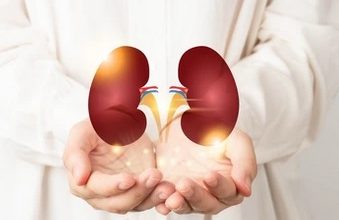How Switzerland is leading Innovation going forward
Author: Sebastien Hug, CEO & Consul General, Swissnex India;

Author: Sebastien Hug, CEO & Consul General, Swissnex India; Maitree Dasgupta, Head of University Partnerships, Swissnex India; Alexandra Allet, Project Manager, University Partnerships, Swissnex India
Switzerland has a long and proven track record as a leader in the field of healthcare technologies. Emerged originally out of the industrial revolution, the pharmaceutical industry has evolved since the mid-20th century to become a central pillar of Switzerland’s economy and as a world leading hub for innovation of pharmaceutical products and processes. Not surprisingly, the pharma sector is one of the biggest R&D spenders and contributes significantly to the fact that Switzerland is among the countries with the highest R&D expenses as a percentage of the GDP, that is, 3.4 per cent versus a OECD average of 2.4 per cent.
Proven Track Record
But big pharma is not the only piece of Switzerland’s healthtech landscape puzzle. Numerous Small and Medium Enterprises (SMEs) drive innovation especially in the Medtech and Biotech sector, and create a vibrant and tightly-knit eco-system. In fact, Switzerland is home to around 1,350 medical technology companies and thereby has the highest concentration of Medtech enterprises in Europe.
With respect to Biotech, Switzerland in fact gave birth to one of the world’s first biotech company, Biogen in 1978. Nonetheless, it was only since the mid-1990s that the healthcare biotechnology sector has taken off in Europe. But Switzerland has caught up since and its biotech companies have become highly sought after assets. Last year, for example, Johnson & Johnson acquired Actelion for USD 30 billion, the largest transaction in 2017 in the life sciences sector. Another indicator of its maturity is its quantity and quality of the field biotech-related patents. While there has been a strong growth from 2000 to 2010, the number of patents have been increasing only slightly, especially in comparison to a strong growth in China and South Korea. At the same time, however, the quality of the patents has become much stronger. Half of all Swiss biotech patents are qualified as world-class, which is defined as the top percent of all patent families by business value.
Several reasons contribute to explaining Switzerland’s leading role in innovating healthcare. For one, it is one of the highest spenders on healthcare per capita in the world. But more importantly, healthcare companies choose to conduct R&D in Switzerland because of its highly-skilled workforce, the high labour productivity, the proximity to world-class research institutions and the stable as well as liberal economic environment. In spite of its past successes, Switzerland cannot rest on its laurels. Its healthtech industry is facing many challenges: Decreasing R&D productivity, the looming patent cliff, demands for lowered priced yet high-quality healthcare solutions, among others. Without doubt, the global pharma and biotech R&D landscape is going through a major restructuring. And Switzerland is no exception. While no comprehensive review can be given here, we would like to briefly explore how some of the major trends shape the Swiss eco-system, that is: personalized, translational and digital.
Reshaping Healthcare Innovation
With patents running out and conventional R&D approaches yielding low returns on investment, the two large Swiss pharma companies Novartis and Roche are readjusting their portfolios to align themselves with their personalized medicine strategies. Non-core assets and primary care offers are being divested, while R&D efforts are focused on developing breakthrough, highly innovative products, such as cell- and gene therapies, which also impacts operations in Switzerland. Only very recently, Novartis announced to cut a substantial amount of jobs in its manufacturing facilities and business service units, while at the same time investing into creating new positions in the development and production of cell and gene therapies.
Collaborative Effort
Given the emphasis on highly innovative diagnostic and therapeutic approaches, healthcare industry players seek external collaborations and rely even more on strong R&D eco-system with world-class basic research. With its excellent universities and research institutions, Switzerland is well suited to support breakthrough discoveries through translational research and lead the trends in personalized and precision medicine. As a case in point, Switzerland’s first genome center opened its doors in 2017, located in Geneva at the Campus Biotech. The Federal Institute of Technology in Lausanne (EPFL), the University of Geneva (UniGE) and the Geneva University Hospital (HUG) have joined forces, aiming to create Switzerland’s first high-throughput DNA sequencing platform, with the ambition to become Europe’s largest. Similarly, at the University Hospital of Bern, the Swiss Institute for Translational and Entrepreneurial Medicine is currently being established offering specialist R&D labs for joint use by industry and academia, among other things. Another example is the establishment of the Wyss Zurich R&D center. Thanks to a donation of USD 120 mn by Synthes founder and entrepreneur Hansjörg Wyss, the University of Zurich and ETH Zurich launched the joint center to drive translational research in the fields of regenerative medicine and robotics.
National Data Infrastructure
At the core of these developments is an ever rapidly growing amount of data that is being produced and ought to be analyzed. To ensure the quality, exchange and interoperability of health data (i.e. clinical, molecular, laboratory and imaging data), a well-functioning collaboration among relevant institutions, especially in a small country like Switzerland, is absolutely paramount. Hence, the Swiss government has launched in 2017 the “Swiss Personalized Health Network” (SPHN) initiative and dedicated USD 70 mn to build a national coordinated data infrastructure for research hospitals, universities, and other research institutions. Instead of creating a centralized data-base, the SPHN will “build a dynamic network of existing data sources and fund the efforts needed in order to make data nationwide interoperable and sharable for research”. Part of the SPHN was initiated by the Swiss Institute of Bioinformatics (SIB). Founded twenty years ago, today it represents the largest national bioinformatics network in Europe and is a key player in enabling Switzerland’s transition towards personalized medicine.
Data Driven Innovation
From IoT-enabled medical devices to mobile health solutions, data-driven innovations have also become pivotal to many Swiss start-ups and spinoffs from Universities. Take Ava, currently one of the hottest Swiss start-ups with offices in Zurich and San Francisco. Ava is a wearable wrist device which predicts the fertile window in a woman’s cycle in real-time, facilitating family planning through data-driven, clinically-proven technology. Developed in partnership with Neuchâtel-based research institute CSEM and the University Hospital Zurich as clinical partner, Ava’s data-driven solution is proven to be far more reliable than other traditional methods. In May, Ava has just closed a series B funding round raising USD 30 mn. Another example of a MedTech start-up deploying the latest advances in medical imaging analysis and machine learning is RetinAI, a spinoff of the Universities of Bern and Lausanne. RetinAI automatically identifies pathological biomarkers by learning from its data, and thereby supports the health care professionals in their diagnosis of eyes-related illnesses.
Investing in Education
Yet, to lead innovation in healthcare, investments in new infrastructures and collaborative initiatives are not enough to unleash the full potential of the digital revolution in healthcare. At the beginning of all innovation is the human mind and its ability to imagine the future. Deprived of any natural resources, Switzerland has no other choice than to invest in its brains, that is, its education system. To be highlighted is the important role of its VET (vocational and educational training), dual-track system. Two-thirds of Swiss teenagers choose to do an internship, which generally combines three-day real-world learning in a company, and two days in a school-setting. In this respect, of great importance is the close partnership between the state, industry associations and educational institutions to develop apprenticeship programs and curricula that reflect the latest developments and needs of the industry. Equally noteworthy are the increasingly large number of continuing education courses offered by higher education institutions. Supporting the necessity of lifelong learning in a fast-changing world, these sought after courses are addressed to professionals, combine theory with real-world application and ensure continuous up-skilling on topics such as “Digital Food Competencies”, “Digital Basics for Life Sciences” and “Advanced Clinical Trial Management”.
Embracing Synergies
Alas, the latest developments medical and life sciences landscapes illustrate that a vibrant interplay between all players – including established companies, start-ups, research and educational institutions as well as policymakers and politicians – is absolutely crucial for a small country such as Switzerland. It is therefore not about just investing more into education and R&D, but doing so smartly: harnessing synergies by entering a new age of collaboration across industries and sectors; embracing the digital revolution by completely reimagining the way we solve problems in the healthcare industry; and enable thriving innovation eco-systems by ensuring favourable economic, political, and social framework conditions. Lastly, especially as a small country, openness and international outreach to collaborate and exchange with peers abroad is equally important for future success. To this end, the Swiss government has initiated the swissnex network, in 2000, to support Switzerland’s education, research and innovation players.
Value in Collaborating
Located in world-leading innovation hubs, the five swissnex offices support the outreach and active engagement of their partners in the international exchange of knowledge, ideas and talent. Established in Bangalore in 2010, swissnex India creates value for its partner by providing context, connecting people and ideas, catalyzing collaborations by curating conversations, and creating visibility. As such, we collaborate with universities, start-ups, innovative companies, and policymakers to bring Switzerland and India closer in education, research and innovation. Life Sciences and Healthtech is one of four focus areas where we see much potential and opportunities for more intensified exchange and partnerships.
Switzerland and India: Partners in Innovation
While India has become one of the leading generic drug manufacturer in the world, and is a valuable partner in custom synthesis and contract manufacturing; it can find potential partners in Switzerland in drug discovery & development. A recent collaboration between Novartis subsidiary Sandoz with Biocon to develop biosimilars for use in immunology and oncology is a move in that very direction. Over the last one decade, India has made progress in building an ecosystem which is more favorable to entrepreneurship in life sciences and gave rise to biotech parks and clusters. Govt of India through its grants via. Department of Biotechnology (DBT) and the Department of Science & Technology (DST), boosted the start-up companies in these sectors by creating bio-incubators and building academia industry connections. Now a similar thrust is given to develop the medtech sector in the country by setting-up medtech zones and supporting industry infrastructure.
India’s focus on low-cost but high-quality medical devices and Switzerland’s strength in translational medical technologies (lab to market) is definitely a high potential area. We see a lot of early or mid-stage startups in both countries working on IoT enabled medical devices, where collaborative ventures can be explored for the world market. For example, Smart Cardia, an EPFL spin-off is tackling prevalent cardiac disease through a wearable cloud-based monitoring solution that notifies dangers in heartbeat like arrhythmia to doctors. In 2016, Swissnex India helped Smartcardia to launch trials with Manipal Hospitals in India. As well, this year, we have partnered up with Robert Bosch India Engineering (RBIE) to identify Swiss start-ups, amongst others, in the healthcare sector.
Academia-Industry Training Camp
Moreover, at swissnex India we believe that fostering exchange among students, young researchers and entrepreneurs lays the foundation for future collaboration. Therefore, swissnex India has been running the Academia-Industry Training Camp together with SINE, IIT Bombay, for the past three years. Co-funded by the Department of Science and Technology (DST) and the Swiss State Secretariat for Education, Research & Innovation (SERI), the mission of AIT is to help researchers, take the plunge into entrepreneurship, by building a bridge from academia to industry, through a 1-week intense training camp in India, followed by another week in Switzerland. Lastly, in September we have launched the new ThinkSwiss Research Scholarship Program, which provides grants to Indian undergraduate and graduate students for a summer long (3 months) research internship at a Swiss University.
LifeSciences & healthtech is and will remain one of swissnex India’s focus areas because we believe bringing leading healthcare innovators from Switzerland and India together will not only drive growth and gain new technology knowhow for stakeholders, but also advance high-quality healthcare at optimized cost globally.




